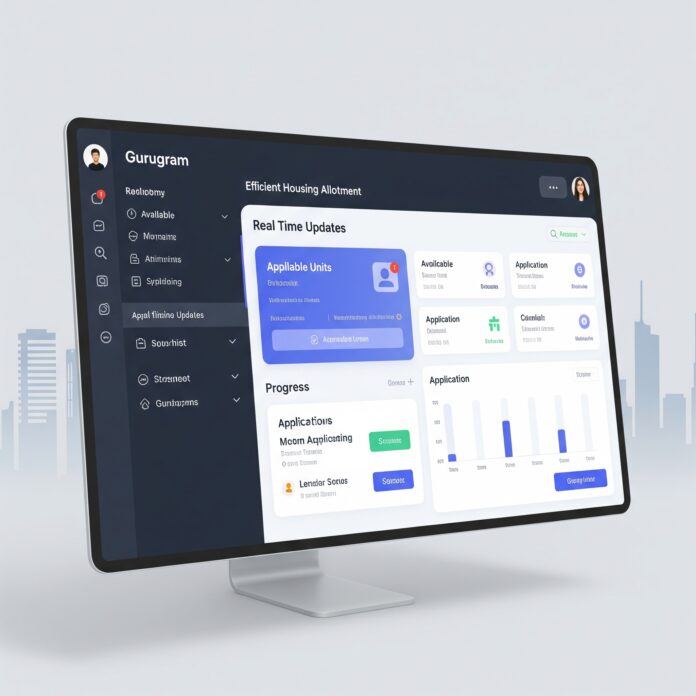GURUGRAM – In a concerted effort to enhance transparency and curb irregularities in affordable housing schemes, the Gurugram government has rolled out an advanced online portal integrated with Aadhaar for direct applicant verification. This significant upgrade, unveiled by the Department of Town and Country Planning (DTCP), directly addresses concerns stemming from past allotment challenges, including a notable incident involving the Aster Avenue 36 housing draw in 2023.
The new ‘TCP Haryana’ portal is designed to automatically fetch and cross-verify crucial applicant details—such as name, address, and mobile number—directly from their Aadhaar profiles. This seamless digital integration is a strategic move to prevent duplicate applications and ensure that beneficiaries have not previously received allotments under other affordable housing initiatives, a common challenge in large-scale government schemes. Renuka Singh, Senior Town Planner at DTCP, affirmed, “Going forward, the Aadhaar-linked system will automatically populate the applicant’s details and verify if they have previously been allotted flats under any affordable housing scheme. If found ineligible, their application will be auto-rejected by the system”. All historical applicant data is currently being migrated into this robust new software, ensuring a comprehensive verification process.
This initiative aligns with India’s broader national drive towards leveraging Aadhaar for transparent and efficient delivery of public services and subsidies, as seen in schemes like Direct Benefit Transfer (DBT) and the Public Distribution System (PDS). Aadhaar’s unique biometric identification capabilities are widely recognized for their role in eliminating fraud and ensuring that welfare benefits reach the intended recipients by preventing fake or duplicate identities. Across India, such digital frameworks are considered pivotal in fostering greater trust in government processes and reducing leakages from public exchequers.
The imperative for such stringent measures in Gurugram stems from specific issues encountered during the Aster Avenue 36 project. The initial draw for 702 flats faced complications when a technical error restricted eligibility to only those with ‘Sohna City’ addresses, narrowing the applicant pool from 51,000 to just 2,200. An internal inquiry led to the cancellation of this draw and a subsequent fresh one. Disturbingly, the fresh draw still revealed that 26 applicants had been repeated in both shortlists, highlighting vulnerabilities in the existing system. The DTCP believes the Aadhaar cross-referencing will effectively eliminate such recurrences.
Beyond individual cases, the affordable housing sector in India, including regions like Gurugram, faces systemic challenges such as rising construction costs, land availability constraints, and complex regulatory frameworks, as well as ambiguity in eligibility criteria. The demand for affordable homes far outstrips supply in many urban centers, making fair and transparent allotment processes even more critical. National policies like the Real Estate (Regulation and Development) Act (RERA), 2016, also underscore the government’s commitment to consumer protection and accountability in the real estate market through mandatory project registrations and public disclosures.
The Aster Avenue 36 case remains sub judice, with proceedings before the Punjab and Haryana High Court and the next hearing slated for July 9. Consequently, refunds for successful applicants from the original draw and the allotment letters for the 702 flats from the second draw are currently on hold. The implementation of this new Aadhaar-linked portal is a proactive step by Gurugram to streamline future processes, build public trust, and ensure that affordable housing reaches its intended beneficiaries with unparalleled fairness and efficiency.

